Essential Bromine Tips for Pristine Hot Tub Water
January 08th, 2025
January 08th, 2025
On a chilly evening, there's nothing quite like slipping into the soothing warmth of a hot tub. For many, it's an oasis of relaxation, a spot where the worries of the day melt away. Yet, maintaining that oasis requires more than just turning on the jets. Effective hot tub care, particularly with bromine, is essential to keep the water sparkling and safe.
Bromine serves as an ideal sanitizer for hot tubs, especially because of its stability in warmer temperatures. Unlike chlorine, bromine doesn't produce a strong odor, making it a favorite among hot tub enthusiasts who yearn for a serene soak without the chemical scent. However, mastering bromine balance can seem daunting at first, akin to unlocking a complex recipe.
When I first started caring for my own hot tub, I remember standing bewildered with various containers, each promising pristine water. The turning point came with understanding the nuances of bromine levels, shocking the water, and the importance of regular testing using simple test strips. It was like learning a new language—once intimidating, later empowering.
This guide aims to demystify bromine hot tub maintenance by breaking down the steps into manageable tasks. Along with a helpful video, you'll gain the confidence needed to ensure your hot tub remains a personal haven. Whether you're a seasoned spa owner or just starting out, these insights will help you maintain a clean, inviting retreat.
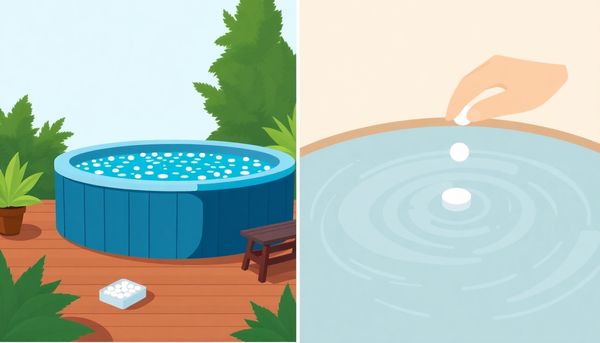
When you dip your toes into the warm embrace of a hot tub, the last thing you want is the harsh sting of chemicals. Here’s where bromine steps up as the unsung hero of spa maintenance. Unlike its more pungent cousin, chlorine, bromine maintains its composure even in steamy conditions. This stability means fewer adjustments and a more predictable maintenance routine.
Remember my first foray into hot tub care? I was baffled by complex charts and jargon. Then, I discovered bromine tablets. These slow dissolvers, when used in a floating dispenser, became a game-changer. Toss a few into the floater, adjust its settings, and let it work its magic over the week. Smooth sailing, right?
But wait, there’s a bit more to this symphony of bubbles. Bromine requires an initial boost to get up to speed, especially in freshly filled tubs. That’s where sodium bromide enters the scene, transforming into active bromine with a dash of non-chlorine shock. It sounds complex, but once you get the hang of it, it becomes as routine as brushing your teeth.
The beauty of bromine lies in its gentle touch. Many spa enthusiasts, especially those with sensitive skin, appreciate its softer feel compared to chlorine. And though it’s a bit camera shy in sunlight, a simple cover can keep it from breaking down too quickly. With regular testing to ensure levels remain between 3 and 5 ppm, your hot tub will remain a haven of relaxation.
Mastering the art of bromine usage in your hot tub can transform a mundane routine into a seamless and satisfying experience. In contrast to chlorine, bromine offers the benefit of steadier performance, particularly at elevated temperatures. This stability is integral to maintaining a consistently clean tub, allowing you to relax without the constant worry of unsanitized water. However, unlocking bromine's full potential requires an understanding of both timing and complementary chemical additions.
Consider a typical week in your hot tub maintenance schedule. The slow-dissolving nature of bromine tablets makes them perfect candidates for a floating dispenser. Every week, you can add three to five tablets, depending on your tub's size and frequency of use. This setup ensures a gradual and sustained release of bromine, keeping levels consistently between the ideal 3-5 ppm. If you’re just starting out or after a fresh fill, kickstart the process with sodium bromide followed by an oxidizer, which transforms bromide ions into active bromine, ready to tackle contaminants.
Monitoring is as crucial as the setup. Test strips come in handy, providing a quick snapshot of your water’s chemistry. For those seeking precision, a liquid test kit can offer more detailed insights. Remember, patience pays off—waiting at least 20 minutes between adding different chemicals ensures that each one can dissolve and react properly. By maintaining this rhythm, you avoid the mishap of an over-concentrated chemical mix, ensuring a safe and enjoyable soak every time.
Choosing the right sanitizer for your hot tub is akin to selecting the perfect seasoning in a recipe—each option provides a unique flavor to your water maintenance routine. Bromine and chlorine are the contenders in this arena, each with their own strengths and quirks. Bromine, often the preferred choice for hot tub owners, excels in stability, especially at higher temperatures. It’s the dependable option that doesn’t lose its punch even when combined with contaminants. This makes it a reliable option for those who want to soak without the worry of a chemical imbalance.
Chlorine, on the other hand, is like the sprinter in the race—it works fast to neutralize contaminants but fades quicker, especially under the relentless gaze of the sun. When it’s in use, free chlorine actively oxidizes contaminants, which means it can offer a rapid response to bacteria and other unwanted guests in your tub. However, be prepared for the occasional whiff of chloramines if your chlorine levels are off.
For those who appreciate a silent guardian in their hot tub, bromine offers a gentler touch with a softer feel in the water. It’s less reactive than chlorine, making it a friendlier choice for sensitive skin. However, bromine does break down under direct sunlight, so a good cover is essential for its longevity. In contrast, chlorine’s quick action might be favored for outdoor tubs that can benefit from its UV protection when stabilized with cyanuric acid.
In the end, your choice might hinge on personal preferences and the specific conditions of your hot tub environment. Whether you prefer the gentle embrace of bromine or the brisk efficiency of chlorine, understanding their distinct characteristics ensures you’ll have a crystal-clear experience.
Maintaining the perfect water chemistry in your bromine hot tub can feel like balancing on a tightrope, but once you master it, the reward is a clean, inviting oasis. Bromine, while stable and gentle, demands attention to detail to keep it at its optimal range of 3 to 5 parts per million. Recognizing when to add bromine is crucial, as it ensures a seamless bathing experience without the pungent aroma often associated with chlorine.
In my own backyard, I’ve found that test strips are a lifesaver. They offer a quick snapshot of your water's health, letting you adjust on the fly without fuss. Just a quick dip and a glance at the color chart can guide you through tweaking levels. However, for those moments when you want precision, a liquid test kit becomes your trusty sidekick. It’s like having a crystal ball that predicts any chemical imbalances before they disrupt your relaxation.
Patience also plays a pivotal role. When adding chemicals, whether it’s the bromine itself or an oxidizer, waiting about 20 minutes between additions can prevent any unwanted reactions. Always keep the jets running and the air blower off; this helps the chemicals mix thoroughly and effectively. A routine of weekly testing and adjustments, paired with a reliable floating dispenser, ensures that your hot tub remains a sanctuary where stress dissolves, leaving only tranquility.
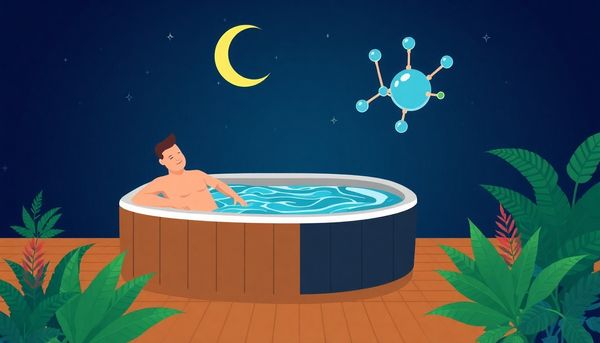
In the world of hot tub maintenance, choosing bromine over chlorine can feel like discovering a hidden gem. A few years ago, I made the switch after a particularly pungent chlorine-filled soak left me questioning my choices. Bromine's allure lies in its stability, especially in the higher temperatures that hot tubs demand. Unlike chlorine, which can be volatile and harsh, bromine maintains its sanitizing power even as it combines with contaminants, ensuring your water stays cleaner for longer without the familiar chlorine smell.
Moreover, bromine’s performance shines when pH levels waver, offering a consistent and reliable purification process. Picture this: your hot tub becomes a sanctuary for relaxation, free from the sharp, eye-watering aroma of chloramines. Instead, the water feels softer and more luxurious against your skin, a gentle embrace rather than a chemical assault. For those of us with sensitive skin, this makes a world of difference.
Using bromine involves a straightforward routine. Begin with bromine tablets in a floater, adjusting the settings to release just the right amount. Since it doesn’t dissolve as swiftly, weekly adjustments suffice, making maintenance a breeze. Keep in mind that sunlight can degrade bromine, so a cover is a worthwhile investment to shield your spa from UV exposure. Coupled with an occasional chlorine shock to tackle heavy use, bromine offers a balanced, user-friendly approach to keeping your hot tub pristine. Trust me, once you experience bromine’s benefits, there’s no looking back.
Ensuring bromine remains stable in your hot tub isn't just a task—it's an art form that balances science and routine. Think of bromine as your steadfast ally, maintaining order in the warm, bubbling waters. Unlike chlorine, which tends to break down under UV rays, bromine holds its ground, especially in hot environments. To harness its full potential, you'll need to understand when and how to add it.
Starting with a solid base is crucial. When you fill your hot tub anew, introduce a bromine booster, such as sodium bromide. This sets the stage for the bromine to activate effectively. Follow this by adding a non-chlorine shock, which transforms bromide ions into active bromine, ready to tackle contaminants. Remember, consistency is key—regular use of bromine tablets in a floating dispenser will keep your levels steady.
Keep an eye on those bromine levels. Aim to maintain a range of 3 to 5 ppm to ensure the water is sanitized yet comfortable. Test your water weekly, using reliable strips or a liquid test kit, and adjust as needed. If you're unsure about the chemistry, consider jotting down your findings in a dedicated hot tub journal.
Storing your bromine properly can also enhance its stability. Shield it from direct sunlight by keeping your hot tub covered when not in use. This not only protects the bromine but also preserves the inviting warmth and clarity of your tub's waters. Understanding and optimizing bromine stability transforms maintenance into a seamless ritual, ensuring you enjoy every soak in pristine conditions.
A soak in the warm embrace of a bromine-treated hot tub can feel like a gentle hug after a long day. Bromine offers a unique advantage over chlorine—it doesn’t just sanitize your water, it enhances the overall comfort of your soak, providing a softer, more skin-friendly experience. I remember the first time I switched to bromine; the water felt noticeably smoother, and my skin didn’t have the tight dryness that chlorine sometimes leaves behind.
To achieve this superior water comfort, the timing of bromine addition is crucial. Unlike chlorine, which can be a bit finicky with fluctuating pH levels, bromine thrives in the warm, bubbling environment of a hot tub. It’s more stable, maintaining its effectiveness even as temperatures rise. When my brother started using bromine, he noticed it was far less maintenance-intensive. His hot tub always seemed ready for a dip without the constant need to tweak chemical levels.
For the best results, consider using bromine tablets in a floating dispenser for a consistent release. Just ensure that your hot tub is covered when not in use to protect the bromine from breaking down in direct sunlight. Regularly testing your water ensures the bromine levels remain between 3 and 5 ppm, keeping your soak pleasant and safe. Once you experience the gentle feel of bromine-treated water, returning to harsher sanitizers becomes a hard sell.
Understanding bromine maintenance can transform your hot tub experience from a chore into a breeze. Unlike chlorine, bromine thrives in hot water, maintaining its effectiveness over extended periods. This makes it particularly suitable for those who seek less frequent upkeep without compromising water quality. However, the real trick lies in knowing how and when to introduce bromine into your spa.
Begin with a bromine booster if you're starting with fresh water. This initial step, using sodium bromide, sets the stage by preparing your water to hold bromine effectively. Following this, apply a non-chlorine shock to activate the bromide, converting it into a powerful sanitizer. Once your spa is primed, bromine tablets can be your long-term ally. Placing them in a floating dispenser allows for a steady release, providing consistent sanitation.
Personal experience has shown me that a good floater is indispensable. It not only simplifies the process but also ensures balanced bromine levels, maintaining them between 3 to 5 ppm. Adjust the floater settings depending on usage, and remember to monitor the water weekly using test strips. This routine keeps the water invitingly clear and the process wonderfully hassle-free.
Lastly, don’t let direct sunlight undo your efforts; always cover your hot tub when not in use. With these steps down, bromine maintenance becomes less of a task and more of a ritual, ensuring every soak is as refreshing as the last.
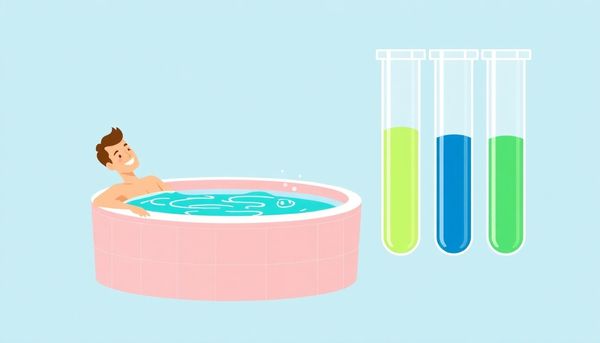
Maintaining a hot tub can feel like an enigmatic science project, especially when bromine comes into play. Yet, with a few strategic steps, bromine becomes a straightforward ally in your quest for clean, inviting water. First, think of bromine in two forms: tablets and granules. Tablets are your slow-release solutions, ideal for those floaters drifting on the surface, slowly dispensing their magic. Granules, however, provide a more immediate boost, perfect when your levels are dipping—just like a quick espresso shot during a long day.
For those new to bromine, the initial setup requires a bit of chemistry. Start with a bromine booster, often called sodium bromide, which lays the groundwork for effective sanitation. Following this, a non-chlorine shock (or oxidizer) is crucial—it activates the bromide, transforming it into active bromine. This move is akin to lighting a firecracker’s fuse, ensuring your water remains sparkling and inviting.
Keep an eye on that bromine level, maintaining it between 3 and 5 ppm. This sweet spot ensures your hot tub remains a haven, free from uninvited microbial guests. As you become familiar with your hot tub’s needs, adjusting bromine frequency becomes second nature—whether it's a weekly ritual or a quick top-up after a pool party. Embrace this rhythm, and soon your hot tub will be the relaxing retreat you always envisioned, without the lingering chlorine scent.
Navigating the world of hot tub care can seem daunting, but mastering bromine application is simpler than it appears. Bromine, unlike its cousin chlorine, thrives in the warmth of a hot tub, maintaining stability even when temperatures climb or pH levels waver. This stability makes it a favored choice among hot tub enthusiasts, offering a gentler experience without the harsh odors often associated with chlorine.
To optimize bromine use, timing is key. Begin by knowing your tub's capacity in gallons—this helps in accurately determining the amount of bromine needed. Start with a bromine booster, such as sodium bromide, to kickstart your sanitizing process. Follow this with a non-chlorine shock to activate the bromide, converting it into active bromine sanitizer. This sequence ensures your hot tub is prepped for regular maintenance.
In my experience, slow-dissolving bromine tablets work wonders in a floating dispenser, maintaining consistent levels. Adjust the floater settings for your specific tub size, adding three to five tablets weekly. Regular testing is crucial; use test strips or a liquid test kit to keep bromine levels within the 3 to 5 ppm range. Regular checks, ideally once a week, ensure your water remains clear and inviting.
Remember, while bromine is resilient, it doesn't fare well under direct sunlight. A good cover will protect it, prolonging its efficacy. By following these steps, you’ll enjoy a clean, odor-free soak—perfect after a long day.
Selecting the right bromine products for your hot tub is akin to choosing the perfect ingredients for a favorite dish—it’s all about balance and harmony. With bromine, you aim to strike a sweet spot that ensures your hot tub remains a sanctuary of cleanliness without any overpowering chemical odor. Bromine tablets are a popular choice due to their slow-dissolving nature, making them ideal for floating dispensers. This setup allows for a consistent release of bromine, maintaining stable levels while you relax. If you've ever experienced the hassle of frequent chemical adjustments with chlorine, you'll appreciate the low-maintenance charm of bromine tablets.
On the other hand, bromine granules offer a quicker solution for those moments when you need an immediate boost in your sanitizer levels. Think of them as your instant coffee fix—quick and effective, perfect for new fill-ups or when levels drop unexpectedly. For effective use, pair these granules with a bromine booster like sodium bromide, especially when starting fresh. Following up with a non-chlorine shock will activate the bromide, fully prepping your spa for regular bromine maintenance.
Remember, every hot tub and owner has unique needs. While one might revel in the simplicity of tablets, another might prefer the responsiveness of granules. Keep experimenting until you find the combination that suits your routine and ensures your personal oasis stays inviting and safe.
Maintaining the right bromine levels in your hot tub is like keeping your favorite garden in perfect bloom—it requires attention, balance, and a bit of know-how. Bromine, a favorite among hot tub owners for its gentle touch and lack of chlorine's strong scent, demands a range of 3 to 5 ppm (parts per million) to work its magic effectively. Anything below this means the water might not be sanitized enough, while higher levels could turn a relaxing soak into a skin-irritating ordeal.
Finding that sweet spot isn't just about adding tablets or granules. It begins with a weekly ritual: testing. Whether you prefer the convenience of test strips or the precision of a liquid test kit, consistency is key. It's like checking the oil in your car; it keeps everything running smoothly. Remember to account for your hot tub's water volume before you start your testing, ensuring your calculations hit the mark.
When the bromine dips, a boost might be necessary more often than you'd expect, especially if your hot tub becomes the star of frequent gatherings. Introducing bromine after each use or shock treatments after a party can keep the water pristine. And while bromine has a slower reaction time than chlorine, its stability in hot water assures a more lasting defense. With a little dedication, you’ll enjoy a clear, inviting oasis whenever you wish to unwind.
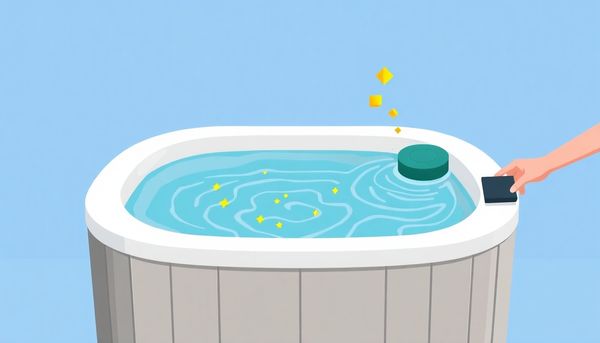
Testing and adjusting bromine levels in your hot tub is not merely a task; it's a ritual that ensures your oasis remains pristine and inviting. Keeping the bromine levels between 3 and 5 ppm is crucial for maintaining a safe and healthy environment. But how do you ensure these levels are just right?
Begin with a simple test. Grab a set of test strips or a liquid test kit—both are effective, though the liquid kits often provide more precise readings. Submerge the strip or gather a sample, waiting just a bit for the results. This process should be part of your weekly routine, akin to checking the oil in your car. You wouldn’t want anything to jeopardize your relaxation time, would you?
Each hot tub is unique, with the volume of water and frequency of use affecting how often you need to adjust the bromine. Perhaps you enjoy a nightly soak, or maybe it's a weekend treat—either way, keeping an eye on usage patterns helps to predict bromine needs. For more frequent soakers, daily or every-other-day adjustments may be necessary, while others might find a weekly check suffices.
Incorporate these checks as a part of winding down after a busy week. It’s a small act of care that makes a big difference in your spa's longevity. Remember, never mix bromine with chlorine directly in your hot tub; it’s a chemistry experiment best avoided. Take the time to enjoy the ritual, knowing it leads to uninterrupted bliss in your personal water haven.
Establishing a bromine testing routine is akin to crafting the perfect cup of coffee: once you master the process, it becomes second nature. Begin by understanding your hot tub's water capacity, as this determines the amount of bromine needed. With that knowledge, testing your water at least once a week using test strips becomes a habit. It's a simple ritual: dip the strip, wait those crucial 15 seconds, then compare the colors to the guide on the packaging. This straightforward step helps ensure your bromine levels remain within the ideal range of 3 to 5 parts per million.
Relying solely on test strips, however, might occasionally leave you guessing. For those who crave precision, a liquid test kit offers more detailed insights. This tool, though slightly more involved, provides a clearer picture of your water’s chemistry. Adjustments become easier, and your confidence in maintaining a pristine hot tub grows.
Remember, chemistry can be sensitive. Patience is key. Allow at least 20 minutes between adding different chemicals and retesting. This prevents unwanted reactions and keeps your water balanced. Keeping the jets running and the air blower off during this time ensures optimal distribution of chemicals. With these steady practices in place, your bromine routine seamlessly integrates into your hot tub care, promising clean, inviting waters every time you take a dip.
Maintaining the right bromine levels in your hot tub isn't just a matter of convenience—it's essential for both your health and the longevity of your spa. I remember the first time I realized the importance of precise bromine management. The water in my hot tub seemed clear, but after testing, I found the bromine levels were too high, leading to skin irritation for anyone who ventured in.
To navigate this balancing act, regular testing is crucial. A simple test strip dipped into the water will quickly reveal your bromine levels, which should ideally sit between 3 and 5 parts per million (ppm). If the levels are off, adjustments are straightforward. Low bromine levels can often be raised by adding a bromine booster or more tablets to your floater. For high bromine situations, it's best to remove the floater and allow time and use to naturally reduce levels, or perform a partial water drain and refill.
An essential tip is to always wait about 20 minutes after adding any chemical before retesting. This ensures the chemical has time to dissolve and distribute evenly. Remember, patience here pays off. Also, running the jets can help distribute the bromine more effectively, but keep the air blower off to prevent unnecessary evaporation.
So, next time you’re relaxing in your hot tub, you’ll appreciate that a little extra attention to bromine balance guarantees nothing but soothing, sanitized bliss. With these practices, you'll enjoy the gentle, odor-free experience bromine is known for, without the risks of overexposure.
Maintaining the perfect balance in your hot tub with bromine is akin to mastering a fine art—one where timing and precision are key to optimal results. Unlike its more aggressive cousin, chlorine, bromine operates with a steady hand, quietly breaking apart contaminants without that harsh, bleach-like scent. But to unlock its full potential, understanding the nuances of its behavior in water is essential.
Bromine thrives in high temperatures, making it an ideal choice for hot tubs. It’s a bit like that reliable friend who remains calm under pressure, consistently working in the background even after tackling contaminants. But, there’s a catch: it doesn’t fare well under direct sunlight, so a cover on your tub isn’t just an accessory—it’s a necessity. This simple step preserves bromine's effectiveness, ensuring your water stays clean and inviting.
To kick things off, initiate your hot tub experience with a bromine booster such as sodium bromide. This sets the stage for the bromine to do its job. Follow this with a non-chlorine shock to activate the bromide, converting it into the active sanitizer you need. Regularly using bromine tablets in a floater will then maintain your tub's balance. Remember, your bromine levels should hover between 3 to 5 ppm for safety and efficiency.
Testing your water weekly with strips or a liquid kit will help keep these levels in check. And if you notice cloudy water after a social splash, don’t hesitate to give it a boost with a chlorine shock. This keeps the environment perfect for your next soak while maintaining bromine's gentle touch.
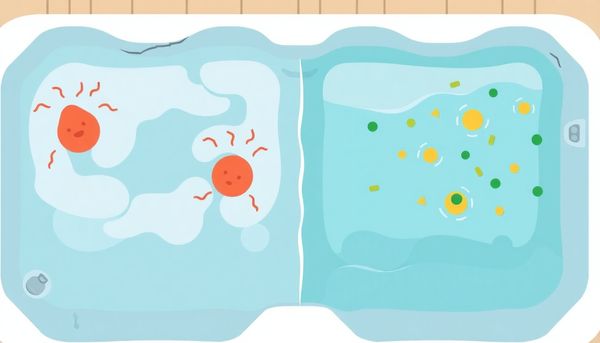
In the world of hot tub maintenance, bromine tablets are often hailed as a trusty ally. They offer a gentle yet effective approach to keeping your water pristine, much like a reliable friend who quietly supports you in the background. Unlike chlorine, bromine continues to work its magic even after binding with contaminants, ensuring a longer-lasting defense against bacteria and other microorganisms. This makes it particularly appealing for those who enjoy a dip in warmer waters, as bromine remains stable at higher temperatures.
Adding bromine tablets to your routine is straightforward. Begin by placing them in a floating dispenser, which allows for a controlled and consistent release. Typically, three to five tablets are sufficient for a week’s worth of sanitization, depending on your tub’s capacity and usage. It’s like setting a slow cooker: once you’ve adjusted the floater settings, the tablets do the heavy lifting while you relax.
One personal tip: if you’re introducing bromine to a freshly filled hot tub, kickstart the process with a bromine booster, usually sodium bromide. Follow this with a non-chlorine shock to activate the bromide into a working sanitizer. This initial step ensures your water is ready for regular bromine tablet use. Remember, test your water weekly to maintain those ideal bromine levels between 3 and 5 ppm, and your hot tub will reward you with clean, inviting water that’s always ready for a soak.
Selecting the perfect bromine dispenser for your hot tub can be the difference between effortless maintenance and frequent headaches. A friend once mentioned how they struggled with constantly monitoring their bromine levels, only to realize their dispenser was not releasing bromine evenly. With so many options available, finding the right fit can feel overwhelming, but understanding the nuances can simplify this task significantly.
Floating dispensers are popular among hot tub owners for their convenience and effectiveness. These dispensers are perfect for bromine tablets, which dissolve slowly, releasing a steady stream of sanitizer. It's essential to adjust the dispenser's settings to control the rate at which bromine is introduced into the water. For smaller tubs or pools, a compact floater can ensure optimal distribution without overwhelming the system.
However, if you're keen on minimal intervention, consider an in-line brominator, despite its tendency to work better with faster-dissolving chemicals. Although bromine tablets may dissolve too slowly in these systems, some innovative models offer adjustable feeds, allowing for better control over the process. A friend found great success with an in-line system that had customizable flow settings, making it ideal for their specific usage patterns.
Ultimately, the right dispenser aligns with your lifestyle and hot tub usage. Whether you prefer the simplicity of a floating dispenser or the sophistication of an in-line system, your choice should aid in maintaining a perfect 3-5 ppm bromine level, ensuring your tub remains a haven of relaxation.
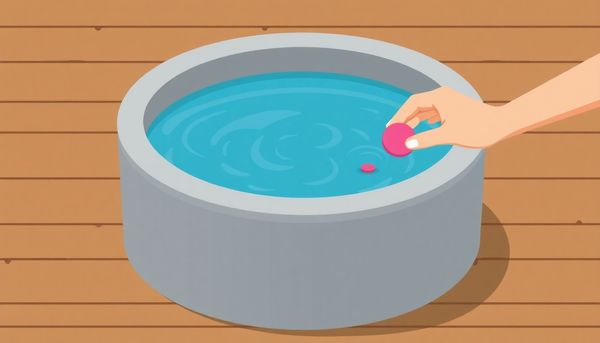
This article provided insights into maintaining your pool. Start your pool care journey today!
Want to become a pool maintenance expert? Our free Pool School course covers everything you need to know about pool care. From basic maintenance to advanced troubleshooting, you'll learn how to:
Join over 10,000 pool owners who have already transformed their pool care routine. Get started with our free Pool School course today!